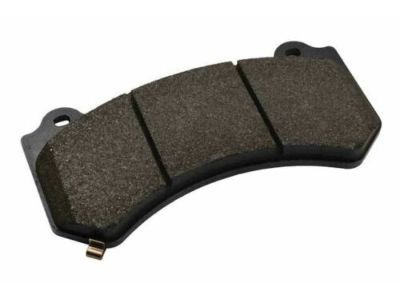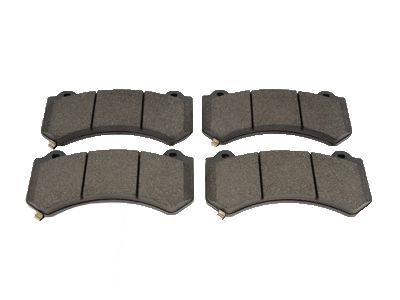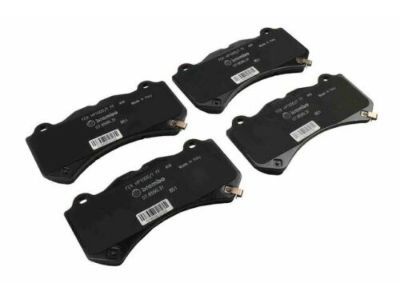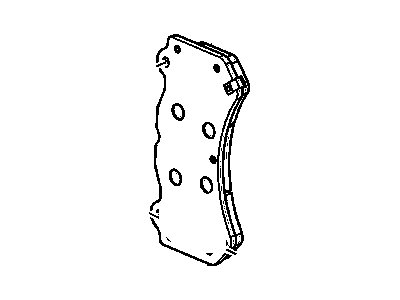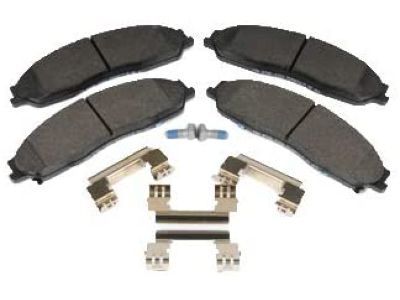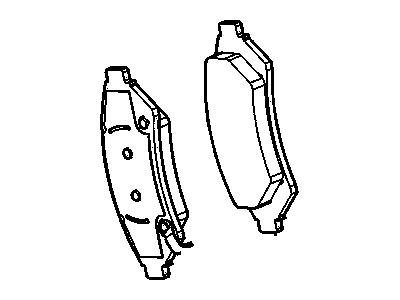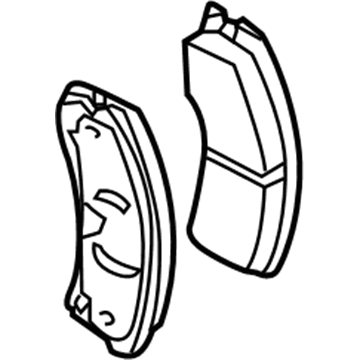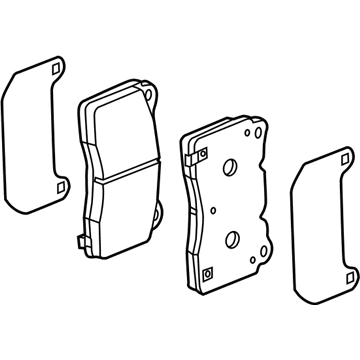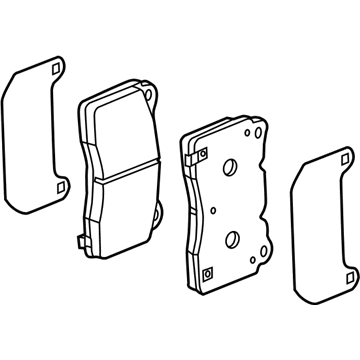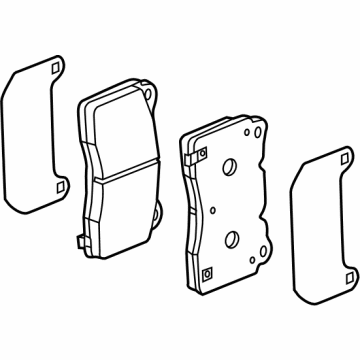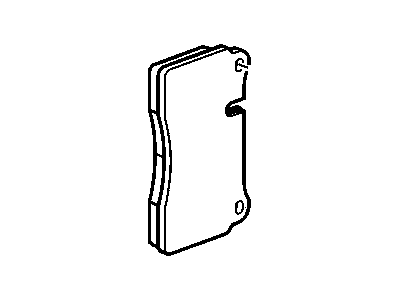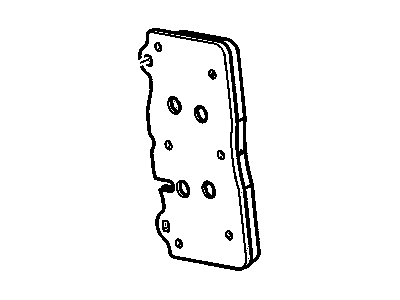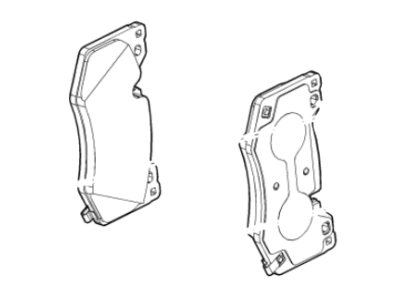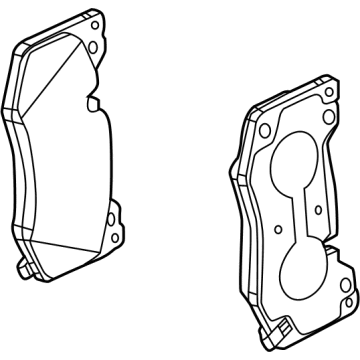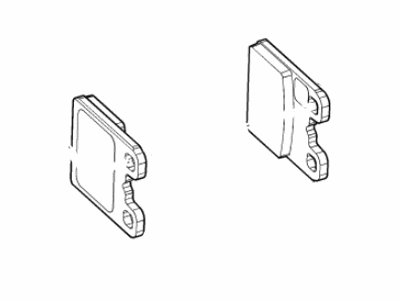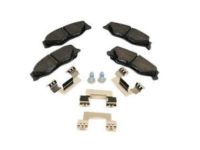
My Garage
My Account
Cart
Genuine Chevrolet Corvette Brake Pad
Disc Brake Pad Set- Select Vehicle by Model
- Select Vehicle by VIN
Select Vehicle by Model
orMake
Model
Year
Select Vehicle by VIN
For the most accurate results, select vehicle by your VIN (Vehicle Identification Number).
45 Brake Pads found
Chevrolet Corvette Pad Kit, Front Disc Brake
Part Number: 25940447$392.70 MSRP: $772.25You Save: $379.55 (50%)Ships in 1-2 Business DaysChevrolet Corvette Pad Kit,Front Disc Brake
Part Number: 19152862$261.41 MSRP: $485.72You Save: $224.31 (47%)Chevrolet Corvette Pad Kit,Rear Disc Brake
Part Number: 19259589$102.46 MSRP: $199.73You Save: $97.27 (49%)Ships in 1-2 Business DaysChevrolet Corvette Pad Kit, Front Disc Brk
Part Number: 84732488$181.06 MSRP: $356.07You Save: $175.01 (50%)Ships in 1-3 Business DaysChevrolet Corvette Pad Kit, Rear Disc Brk
Part Number: 84732503$180.43 MSRP: $354.82You Save: $174.39 (50%)Ships in 1-3 Business DaysChevrolet Corvette Pad Kit, Front Disc Brk
Part Number: 84649600$760.22 MSRP: $1299.92You Save: $539.70 (42%)Ships in 1-2 Business DaysChevrolet Corvette Pad Kit, Front Disc Brk
Part Number: 84197896$279.19 MSRP: $549.05You Save: $269.86 (50%)Ships in 1-3 Business DaysChevrolet Corvette Pad Kit, Rear Disc Brake
Part Number: 22956256$498.06 MSRP: $824.34You Save: $326.28 (40%)Ships in 1-2 Business DaysChevrolet Corvette Pad Kit, Front Disc Brake
Part Number: 22956252$721.34 MSRP: $1233.45You Save: $512.11 (42%)Ships in 1-2 Business DaysChevrolet Corvette PAD KIT-RR DISC BRK
Part Number: 84630374$716.53 MSRP: $1236.07You Save: $519.54 (43%)Ships in 1-3 Business DaysChevrolet Corvette Pad Kit, Rear Disc Brk
Part Number: 84197898$303.08 MSRP: $551.06You Save: $247.98 (45%)Chevrolet Corvette Pad Kit, Rear Disc Brk
Part Number: 84263810$158.48 MSRP: $308.93You Save: $150.45 (49%)Ships in 1-2 Business DaysChevrolet Corvette Pad Kit,Front Disc Brake
Part Number: 89060330$158.77 MSRP: $312.23You Save: $153.46 (50%)Ships in 1-2 Business DaysChevrolet Corvette Pad Kit, Rear Disc Brake
Part Number: 84345385$605.65 MSRP: $1002.40You Save: $396.75 (40%)Ships in 1-2 Business DaysChevrolet Corvette Pad Kit,Rear Disc Brake
Part Number: 89060331$128.61 MSRP: $233.84You Save: $105.23 (45%)Ships in 1-2 Business DaysChevrolet Corvette PAD KIT-FRT DISC BRK
Part Number: 85529064$387.64 MSRP: $762.30You Save: $374.66 (50%)Ships in 1-3 Business DaysChevrolet Corvette PAD KIT-FRT DISC BRK
Part Number: 86824349$845.99 MSRP: $1349.26You Save: $503.27 (38%)Ships in 1-3 Business DaysChevrolet Corvette PAD KIT-RR DISC BRK
Part Number: 87842603$665.71 MSRP: $1061.73You Save: $396.02 (38%)Ships in 1-2 Business DaysChevrolet Corvette PAD KIT-FRT DISC BRK
Part Number: 85142725$314.17 MSRP: $571.23You Save: $257.06 (45%)Ships in 1-3 Business DaysChevrolet Corvette Pad Kit, Park Brk Clpr
Part Number: 84935101$176.12 MSRP: $320.22You Save: $144.10 (45%)
| Page 1 of 3 |Next >
1-20 of 45 Results
Chevrolet Corvette Brake Pad
Chevrolet Corvette brake pads are part and parcel of breaking mechanism, and it is equally responsible to convert the kinetic energy into heat energy by frication with the brake rotors, and this converts the momentum of the car into a halt. These brake pads are predominantly metallic, and come with synthetic composites as well to guarantee that they can handle elevated temperatures that range to 400 degrees Fahrenheit underneath normal circumstances. Chevrolet Corvette brake pads have been changed over the years and there are so many of them in the market for different users. Non metallic, semi metallic, fully metallic and ceramic are some of the choices one has when it comes to selection of clutch plates that differ in friction, wear and noise factors. The most important is to maintain and clean it periodically, brakes pads need to be replaced each approximately 50000 miles, the wear indicators will signal when it is necessary to make this. New brake pad installation with required hardware guarantees top performance and durability to Chevrolet Corvette cars.
Each OEM Chevrolet Corvette Brake Pad we offer is competitively priced and comes with the assurance of the manufacturer's warranty for the part. Furthermore, we guarantee the speedy delivery of your orders right to your doorstep. Our hassle-free return policy is also in place for your peace of mind.
Chevrolet Corvette Brake Pad Parts Questions & Experts Answers
- Q: How to replace the brake pads on sliding calipers on Chevrolet Corvette?A:For replacing the brake pads on the sliding calipers follow this procedure; turn the cap, screwed on the brake fluid reservoir counterclockwise, remove the lug nuts on the wheel, jack up the vehicle to a safe height, secure it on jack stands and block opposite wheels. Take off the wheels and check the Brake Disc on it, but do not forget to cleanse the assembly with a brake system cleaner before their dismantling. Attached to the caliper is a large C-clamp used to force down the piston or multiple pistons depending on the design as well as the inner and outer brake pads, in order to fully remove the caliper with the help of the lower mounting bolt. Remove and clean and lubricate the guide pins of the caliper and then re-fit the pads and tighten the calipers with the help of the mounting bolts and make sure to tighten up the nuts tightly. After installation apply the brake pedal to retract the pads onto the disc and check the brake fluid level. When dealing with fixed calipers, there is need to put some cardboard in between the wheel and the disc before resenting lug nuts. Remove the brake pad wear sensor, if any the caliper bridge pin bolt, and gently push out the old pads in such a way that it cannot push out the piston. Debon the caliper edges, the new pad can then be fitted into the bracket and all related material tightened to the correct torque. Last of all, engage the brake pedal for making sure good contact is made and also to check the brake fluid before regular running. For J56 fixed calipers, use the recommendations in Figure 17 to replace one pad at a time and make certain that the wear sensors are positioned correctly; follow the same procedure for installing and checking the J56 fixed calipers.
Related Chevrolet Corvette Parts
Browse by Year
2024 Brake Pad 2023 Brake Pad 2022 Brake Pad 2021 Brake Pad 2020 Brake Pad 2019 Brake Pad 2018 Brake Pad 2017 Brake Pad 2016 Brake Pad 2015 Brake Pad 2014 Brake Pad 2013 Brake Pad 2012 Brake Pad 2011 Brake Pad 2010 Brake Pad 2009 Brake Pad 2008 Brake Pad 2007 Brake Pad 2006 Brake Pad 2005 Brake Pad 2004 Brake Pad 2003 Brake Pad 2002 Brake Pad 2001 Brake Pad 2000 Brake Pad 1999 Brake Pad 1998 Brake Pad 1997 Brake Pad 1996 Brake Pad 1995 Brake Pad 1994 Brake Pad 1993 Brake Pad 1992 Brake Pad 1991 Brake Pad 1990 Brake Pad 1989 Brake Pad 1988 Brake Pad 1987 Brake Pad 1986 Brake Pad 1985 Brake Pad 1984 Brake Pad
